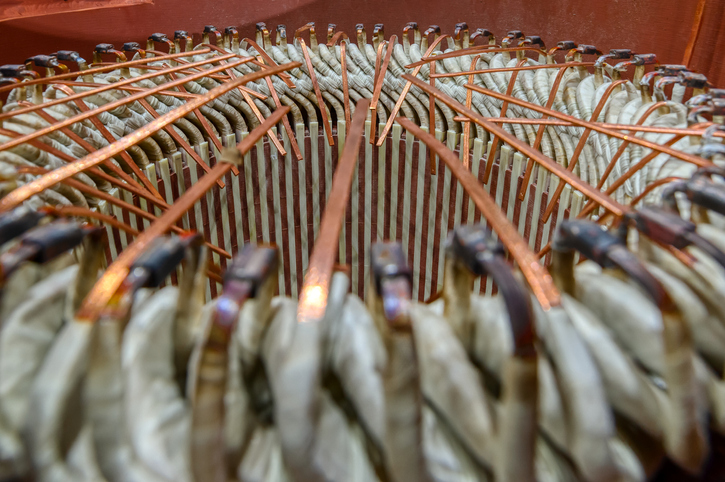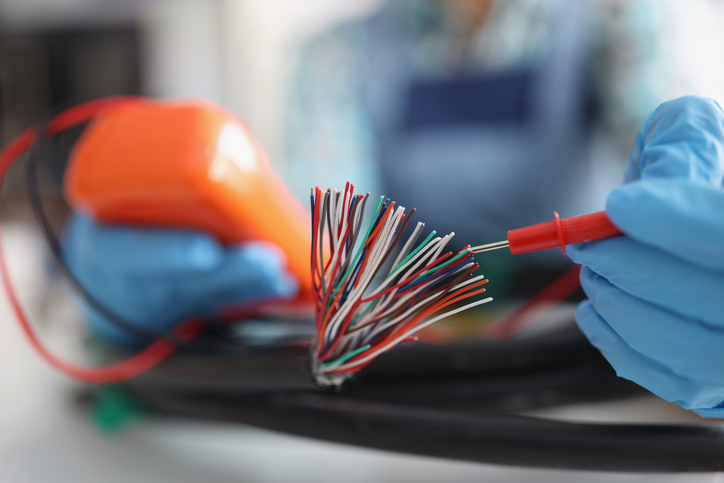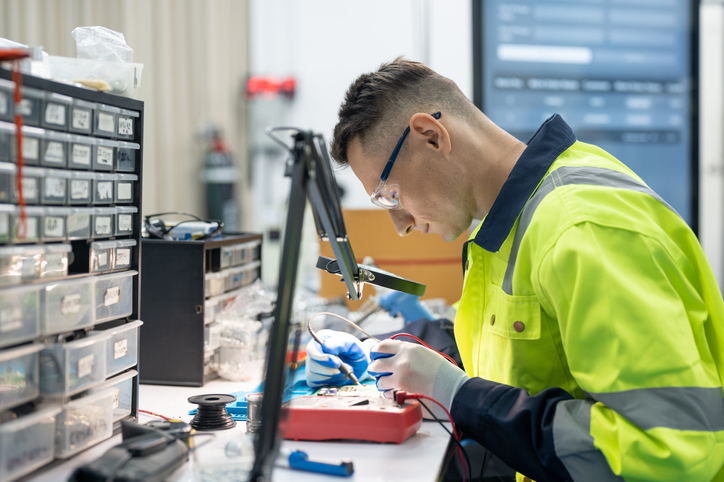High voltage insulation testing is important when making changes to high voltage coil designs. Companies need to confirm that the performance of the new design will meet or exceed the current specs.
No coil manufacturer will make the decision to alter the insulation systems involved in coil construction lightly. Perhaps a coil needs to be downsized to fit into a smaller space. Maybe there have been quality issues or premature failures. It’s possible the capabilities of the design need to be improved.
In short, there has to be a compelling reason to make the change because it’s not easy to implement. It’s an expensive and time-consuming process — taking months or even a year — to properly design and validate a new high voltage coil and the insulation systems that make it work. It’s a significant investment for any high voltage power generation or motor manufacturer.
Examine the Data
When the material needed for the new insulation system or the process of constructing the coil changes, Electrolock can help in evaluating the new elements or finding optimal solutions.
Electrolock has decades of experience in assisting in the verification of new insulation systems, finding answers, and confirming proposed changes. From our Hiram, Ohio facility and in accordance with Institute of Electrical and Electronics Engineers (IEEE) standards and procedures, we perform high voltage insulation testing that helps manufacturers proceed with proper care and scrutiny. So, whether a company is exploring mica groundwall changes, turn or strand insulations, or changes to the conductive or gradient tapes used, Electrolock can help provide the additional testing data needed to guide the decision-making process.
Let’s examine a few of the many types of high voltage insulation testing Electrolock provides.
Need More Testing Assistance?: Electrolock performs analytical tests on the chemical, electrical, mechanical, and thermal properties of materials to determine which will work best for your application.
High Voltage Insulation Testing Essentials
Thorough testing of new materials and processes is the goal of many of the high voltage coil manufacturers, from seeing just how much voltage a generator can handle to how long it can last. Electrolock’s high-voltage lab is outfitted with the equipment required to conduct these tests and manned by an engineering team with years of analytical experience. Below are outlines of some of the tests Electrolock provides to measure and grade the performance of high voltage coils.
High Voltage Breakdown
This test determines just how much a high voltage coil can take and is generally run until failure — voltage is increased until a breakdown occurs.
The minimum requirement for a high voltage coil is typically twice the rated voltage, plus 1,000 volts. With a coil designed for 13,600 volts, for example, the minimum voltage level acceptable before breakdown would be 28,200 (13,600 x2, plus 1,000). Well-made coils should easily surpass this minimum requirement. For instance, the 13,600-volt example above wouldn’t typically see a breakdown until the 60,000-volt threshold. Electrolock is equipped to conduct in-house testing up to 100,000 volts.
Dissipation Factor (with Tip Up)
This test measures the dissipation factor of a coil — the Tangent of the Loss Angle — and is commonly conducted alongside or concurrently with a high voltage endurance test.
Usual practices determine that the dissipation factor is measured at 25% of the line to neutral voltage (below the partial discharge inception voltage); the expected dissipation factor is expected to be less than 1%. The change in dissipation factor between this initial test voltage and the measurement conducted AT the line to neutral voltage of the coil — this is Tip Up — is expected to be less than 0.5%.
Sometimes customers ask for dissipation factors to be run at 125% of the line to neutral voltage or at the operating temperature of the motor or generator. At 25%, this team offers a good examination of the resin system, mica, and other components used in the coil’s construction. The data provided by the Tip Up provides information on how well the coil is made; Higher percentages (the lack of a flatter curve) here could indicate the presence of voids or wrinkles, or even delamination, in the ground wall.
High Voltage Endurance
This exponential stress test is used to see if a high voltage coil is likely to meet the proposed life of its warranty when implemented in the field. The test is typically conducted along with the dissipation factor test.
In this examination, the coil is run at approximately 3.82 times the line to neutral voltage for 400 hours — or 4.46 times the line to neutral voltage for 250 hours. Increasing the voltage stress on the coil to a level well above its expected use accelerates the degradation of the coil under partial discharge. Voltage endurance testing is an important qualification test for high voltage coils.
Partial Discharge Measurements
Partial discharge testing is useful in identifying the partial discharge inception voltage (the voltage level at which partial discharges are initially detected). Once partial discharges occur, the voltage can be reduced to determine the partial discharge extinction voltage (voltage level at which partial discharges cease). These measurements, along with the partial discharge level at the line to neutral voltage of the coil, are helpful in determining the overall quality of the consolidated and fully cured coil.
Electrolock can also perform high-voltage tests on specific materials or an insulation specimen, instead of a fully manufactured coil. These examinations cover a number of aspects important when considering that material or specimen as a part of a coil’s insulation system:
- DC Voltage Breakdown
- Insulation Resistance
- Surface Resistance
- Volume Resistance
- Capacitance
Tailored Solutions for Stator Coils and More: Electrolock offers an extensive list of solutions for applications relating to VPI stator coils and bars and resin-rich stator coils.
Learn More from our Experts in High Voltage Insulation Testing
Electrolock has been engineering solutions for the high-voltage electrical, battery, and thermal insulation industries since 1957. Our focus has always been and will continue to be focused on creating unique and tailored solutions to service the most demanding requests. From insulating motor and generator coils to wire and cable tapes, we have distributor relationships and engineering experience to find the right application solution for you.
With Electrolock’s dedicated three-step process, we’ll analyze and validate the insulation systems — and potential changes to them — used in your high voltage coil manufacturing.




